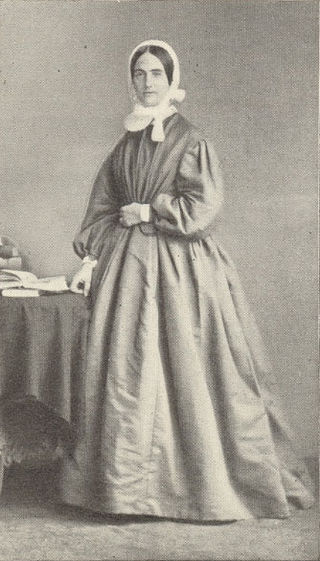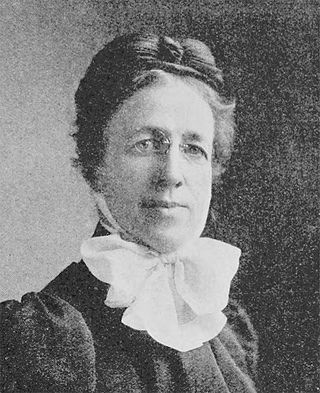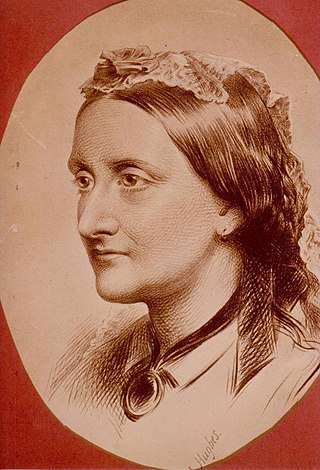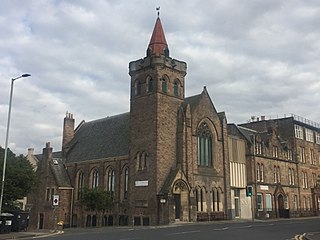
The ministry of a deaconess is a usually non-ordained ministry for women in some Protestant, Oriental Orthodox, and Eastern Orthodox churches to provide pastoral care, especially for other women, and which may carry a limited liturgical role. The word comes from the Greek diakonos (διάκονος), for "deacon", which means a servant or helper and occurs frequently in the Christian New Testament of the Bible. Deaconesses trace their roots from the time of Jesus Christ through to the 13th century in the West. They existed from the early through the middle Byzantine periods in Constantinople and Jerusalem; the office may also have existed in Western European churches. There is evidence to support the idea that the diaconate including women in the Byzantine Church of the early and middle Byzantine periods was recognized as one of the major non-ordained orders of clergy.

Newington Green is an open space in North London between Islington and Hackney. It gives its name to the surrounding area, roughly bounded by Ball's Pond Road to the south, Petherton Road to the west, Green Lanes and Matthias Road to the north, and Boleyn Road to the east. The Green is in N16 and the area is covered by the N16, N1 and N5 postcodes. Newington Green Meeting House is situated near the park.

John Thomas Ball QC was an Irish barrister, judge and politician in the Parliament of the United Kingdom of Great Britain and Ireland, and Lord Chancellor of Ireland.
The Community of St. Andrew (CSA) is an Anglican religious order of professed sisters in holy orders or who otherwise serve in diaconal ministry. The community was founded in 1861 by Elizabeth Ferard, with the encouragement of Bishop Tait of London. It is based in the Diocese of London of the Church of England.

William Henry Collison (1847–1922), also known as W. H. Collison, was an Anglican missionary among First Nations people in coastal British Columbia, Canada.
Thomas CochraneM.B. C.M (1866–1953) was a Scottish medical missionary. He is notable for founding the first school to teach western medicine to Chinese trainee doctors, and for his influential London-based campaigns to promote missionary work.
Edward Pennefather PC, KC was an Irish barrister, Law Officer and judge of the Victorian era, who held office as Lord Chief Justice of Ireland.

Elizabeth Catherine Ferard was a deaconess credited with revitalising the deaconess order in the Anglican Communion. She is now remembered in the Calendar of saints in some parts of the Anglican Communion on either 3 or 18 July.
Richard Pennefather (1773–1859) was an Irish lawyer and judge of the nineteenth century, who enjoyed a reputation for legal ability and integrity. He has been highly praised, in particular, for his scrupulously impartial conduct of the politically sensitive Doneraile Conspiracy Trials of 1829. He was the elder brother of Edward Pennefather, Lord Chief Justice of Ireland.

Lucy Webb Hayes National Training School was a religious training school, now a hospital, in Washington, D.C. So named in memory of Lucy Webb Hayes, the wife of former President Rutherford B. Hayes. It was founded in 1891 and was the authorized training school of the Woman's Foreign Missionary Society of the Methodist Episcopal Church, which owned the property of the school, exercised supervision and jurisdiction over its management, and looked to it to supply the trained workers employed by the society in its widely diversified fields of labor. The privileges of the school were not, however, confined to those connected with the Woman's Home Missionary Society. It opened its doors to all who wanted to prepare themselves for any department of Christian activity. In 1894, the school was chartered by act of Congress in conjunction with the Deaconess Home and Sibley Memorial Hospital, and formed with them one corporation. The unified administration and guaranteed the training of Christian workers.

Lucy Jane Rider Meyer was an American social worker, educator, physician, and author who cofounded the Chicago Training School for City, Home, and Foreign Missions in Illinois. She is credited with reviving the office of the female deacon in the U.S. Methodist Episcopal Church.
William Burns Thomson was a Scottish medical missionary born in Kirriemuir, Scotland to Christian parents. Thomson dedicated his life to the spread of the gospel and to medical missionary work. His work as part of the Edinburgh Medical Missionary Society(EMMS) transformed the organization from its focus on the slums of Scotland to an international missionary aid organization. During his time with EMMS, Dr. Thomson advocated for missionaries across the globe, including Dr. Kaloost Vartan of the Nazareth Hospital and Dr. William Jackson Elmslie in Kashmir. Dr. Thomson also served as a pioneer for medical missionary training by creating the original EMMS training school at the Cowgate dispensary. This led to more training schools being created in other parts of the world, like Bombay(now known as Mumbai) and Calcutta(now known as Kolkata), India.
Lucinda Sullivan was an Irish philanthropist, writer and promoter of children's welfare, and founder of the Sunbeam House.

Catherine Pennefather born Catherine King was an English home mission worker. She was president of the Association of Female Workers, and she edited a magazine and wrote. She created a cottage hospital in Bethnal Green.
Maud Cattell was a British nurse who ran the Mildmay Mission Hospital in London. She was assisted by her sister Clara Cattell.
Elizabeth (Lizzie) Baxter born Elizabeth (Lizzie) Foster was a British evangelist.

The Greyfriars Charteris Centre is a community centre in the Southside, Edinburgh, Scotland, part of the mission of Greyfriars Kirk. The centre opened in 2016 and occupies the 20th century church buildings which became Kirk o' Field Parish Church in 1969.
Katherine Helen Davidson was a Church of Scotland deaconess who was the first deputy of the Church of Scotland's Woman's Guild.
Mildmay Mission Hospital is a specialist voluntary charitable hospital and rehabilitation centre in East London. It is the only hospital in the United Kingdom specialising in the care of HIV/AIDS and related conditions, and the only one in Europe specialising in the treatment and rehabilitation of HIV-associated neurocognitive disorders.












